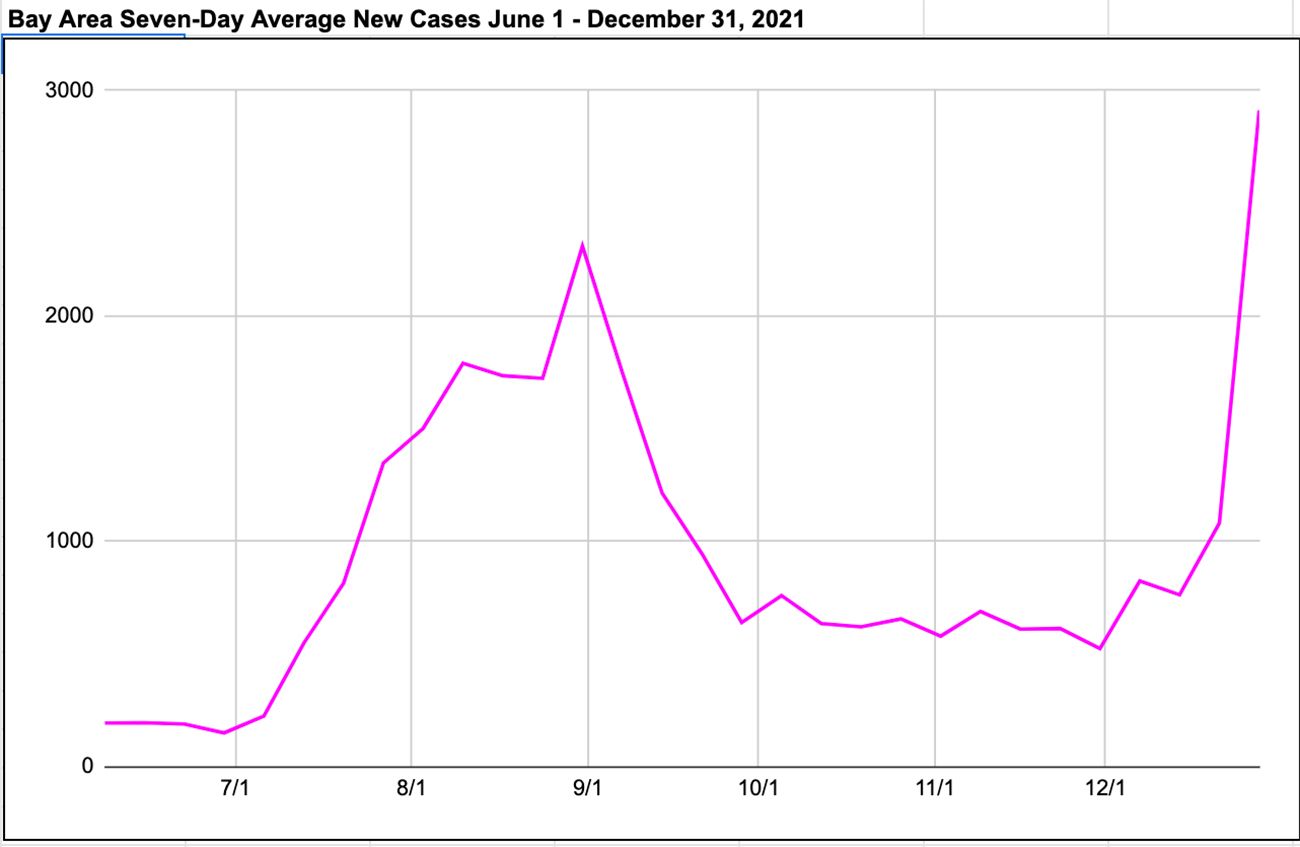The first days of the new year look depressingly similar to the first days of last year, with COVID cases once again surging and hospitals filling up from a spike in holiday-season infections.
The variant is different — and the Omicron strain of the virus appears to cause less severe infections on an average basis. But Delta is still lingering, and when the unvaccinated — or under-vaccinated, as would be the case with those who got one Johnson & Johnson shot and nothing else, for instance — come in contact with either variant, the possibility of severe infection and hospitalization remain.
UCSF Department of Medicine Chair Dr. Bob Wachter warned over the holiday weekend that "even in highly vaxxed SF, our hospitals will be stretched" in this surge, especially with some healthcare workers out sick and people hospitalized with flu and other things. And, he added, "hospitals in cities [with] lower vax rates are likely to be hammered."
As of Sunday, San Francisco had 105 confirmed and suspected COVID cases in its hospitals, more than double the number hospitalized during much of December. And this was the first day since September 8, 2021 when the COVID hospital census rose above 100 patients in the city, at the tail end of the Delta wave.
San Francisco saw its lowest hospitalization numbers in the pandemic in late May and early June, when many indoor businesses were still closed and when vaccinations were still fresh. At the time, the city had just between 10 and 15 people hospitalized with severe COVID. And last winter's wave crested, hospitalization-wise, in the second week of January, when there were around 250 COVID patients in local hospitals.
The Omicron surge is evident across the Bay Area and the state, with hospital numbers spiking over the last ten days. With 6,789 COVID patients in hospitals statewide, the count has already more than doubled since the first week of December. Similarly, the Bay Area has 878 cases in hospitals, more than double the 417 hospitalized just two weeks ago, on December 21.


As seen in the graphs above, the hospitalization spike is not yet as dramatic as the spike in cases, but it is tracking with it, and just about two weeks behind it as we've seen in past waves.
Signs are hopeful that this wave will not be nearly as deadly as earlier waves in the pandemic — and San Francisco hospitals have succeeded in keeping mortality from COVID down well below the national average even during waves of deadlier variants.
As we learned last week, one factor contributing to a rise in severe COVID cases in this wave is pockets of San Francisco that remain unvaccinated — particularly in the Marina, where vaccination remains well below the city average, and where COVID cases have spiked far beyond what other neighborhoods are seeing in recent weeks.
Dr. Wachter has suggested, on a hopeful note, that we'll only be dealing with latest surge for a few more weeks. And by the time Omicron cases subside, and as Pfizer and Merck's oral anti-viral pills are more readily available, we will begin to be able to treat COVID like we do the flu.
But getting over all this psychologically — the fear of crowds, the endless checking of stats — is going to take some major group therapy.
Previously: San Francisco Is Poised for 'Undeniable Hospital Surge’ of COVID-19 Cases
Photo by Jeff J Mitchell/Getty Images

